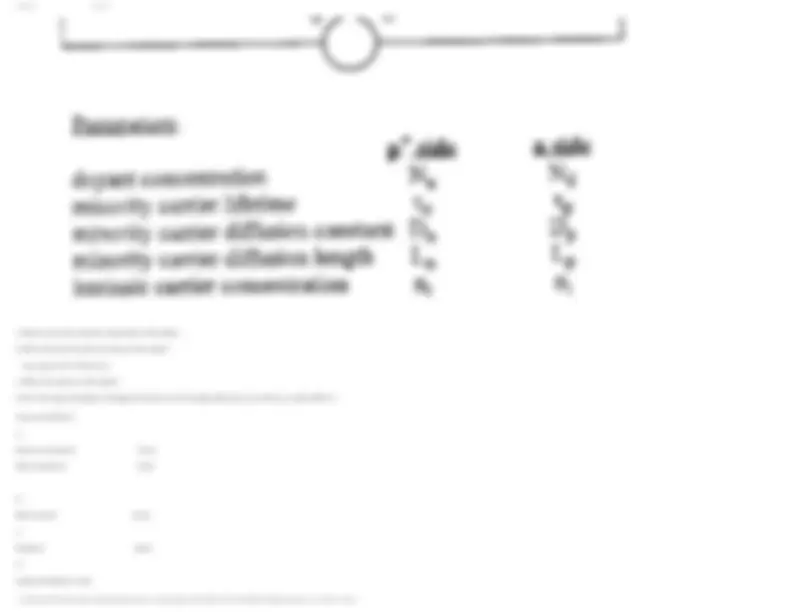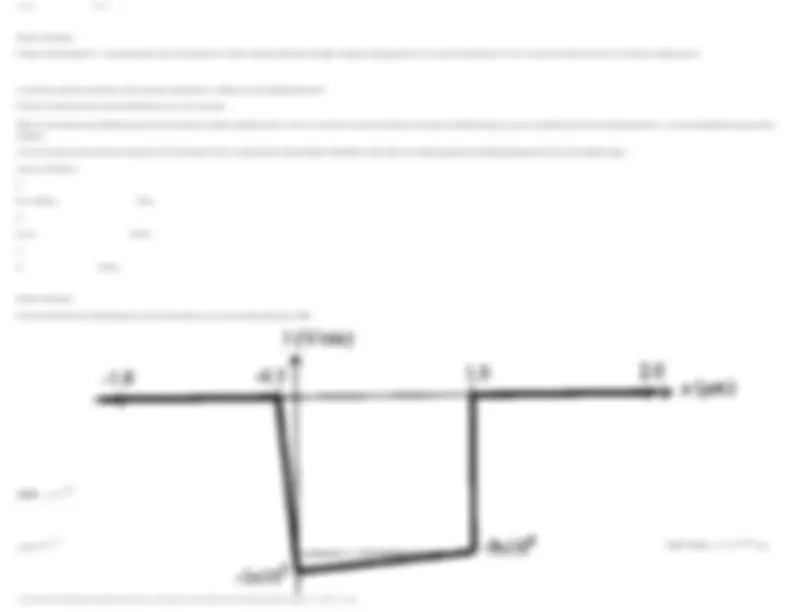





Study with the several resources on Docsity

Earn points by helping other students or get them with a premium plan


Prepare for your exams
Study with the several resources on Docsity

Earn points to download
Earn points by helping other students or get them with a premium plan
Community
Ask the community for help and clear up your study doubts
Discover the best universities in your country according to Docsity users
Free resources
Download our free guides on studying techniques, anxiety management strategies, and thesis advice from Docsity tutors
The midterm examination for the eecs 130: integrated circuit devices course taught by professor king during the fall 1997 semester. The examination covers topics such as doping profiles, built-in potentials, minority carrier lifetimes, and energy band diagrams for various types of diodes. Students are required to answer multiple-choice questions and problems related to these topics.
Typology: Exams
1 / 5

This page cannot be seen from the preview
Don't miss anything!




EECS 130 Fall 1997 Integrated Circuit Devices Professor King
Midterm Examination # October 2, 1997 Time allotted: 80 minutes. Problem 1. [15 points] The doping profiles for 2 ideal silicon long-base p-n junction diodes maintained at 300k are picture below.
The minority carrier lifetimes in the quasi-neutral regions ( , ) are the same for these 2 diodes. Answer the following questions (circle the correct choice): a) The magnitude of the built-in potential in Diode A is [larger than, equal to, smaller than] the magnitude of the built-in potential in Diode B. b) The saturation current of Diode A is
[larger than, equal to, smaller than] the saturation current of Diode B. c) The reverse breakdown voltage of Diode A is [larger than, equal to, smaller than] the reverse breakdown voltage of Diode B. d) The minority carrier diffusion length on the n-type side is [larger, equal, smaller] in Diode A as compared with Diode B. e) For a given forward bias (V (^) a >0), the excess hole density at the edge of the depletion region on the n-type side p' (^) n (x (^) n), will be
[larger, equal, smaller] in Diode A as compared with Diode B. Problem 2 (20 points) Consider a silicon sample maintained at 300k under equilibrium conditions, doped with the following impurities: Phosphorous: 110^16 cm^(-3) Boron : 210^16 cm^(-3)
Problem 3 [25 points] Consider an ideal long-base P+ - n step-junction diode with cross-sectional area A which is uniformly illuminated with light, resulting in a photogeneration rare of G (^) l electron-hole pairs per cm^3-sec. Assume that steady-state and low-level injection conditions prevail.
a) what is the excess hole concentration on the n-type side a large distance (x->infinity) from the metallurgical junction? b) Derive an expression for the excess hole distribution, p'n (x), on the n-type side.
(Hint: solve the minority carrier diffusion equation, and use the boundary condition established in part (a). Also, assume that the excess hole concentration at the edge of the depletion region, p' (^) n (x (^) n), is not significantly affected by the photogenertation, i.e. use the standard depletion-edge boundary condition). c) From your answer in part (b), derive an expression for I-V characterisitc of the P+-n diode under the stated conditions of illumination. Assume that no recombination-generation (including photogeneration) occurs in the depletion region. Answers to Problems 3 a) P'n(x->infinity): [5 pts] b) p'n(x)= [10 pts] c) I= [10 pts]
Problem 4 (40 points) Given the following electric field distribution in a reverse-biased silicon p-n-n+ junction diode maintained at 300K:
Note: It is common to assume that the Fermi level (E (^) f) coincides with E (^) c in n+ (degenerately doped n-type) semiconductor and with E (^) v in p+ (degenerately doped p-type) semiconductor.
a) Sketch the doping profile of this p-n-n+ junction between x=-1 um and x=1 um. Indicate the numerical values of the doping concentrations in the p and n regions. b) Sketch the energy band diagram for this device at zero bias (between x=-1 um to x=2 um). Include E (^) c , E (^) v , and E (^) f on your diagram, and indicate energy (difference between these energy levels in each region of the device. (Numerical values are required).
c) What is the built-in potential of this p-n junction? d) What is the bias voltage applied across this p-n junction (in the Figure above)? e) What is the junction capacitance at this bias? f) What is the punch-through voltage of this device, i,e, what is the minimum (reverse) bias which will ensure that the depletion width on the n-type is 1.0 um?
Answers to Problem 4 a) Doping Profile b) Equilibrium Energy Band Diagram c) d) V (^) a =
e) Cj =
f) V punch-through=